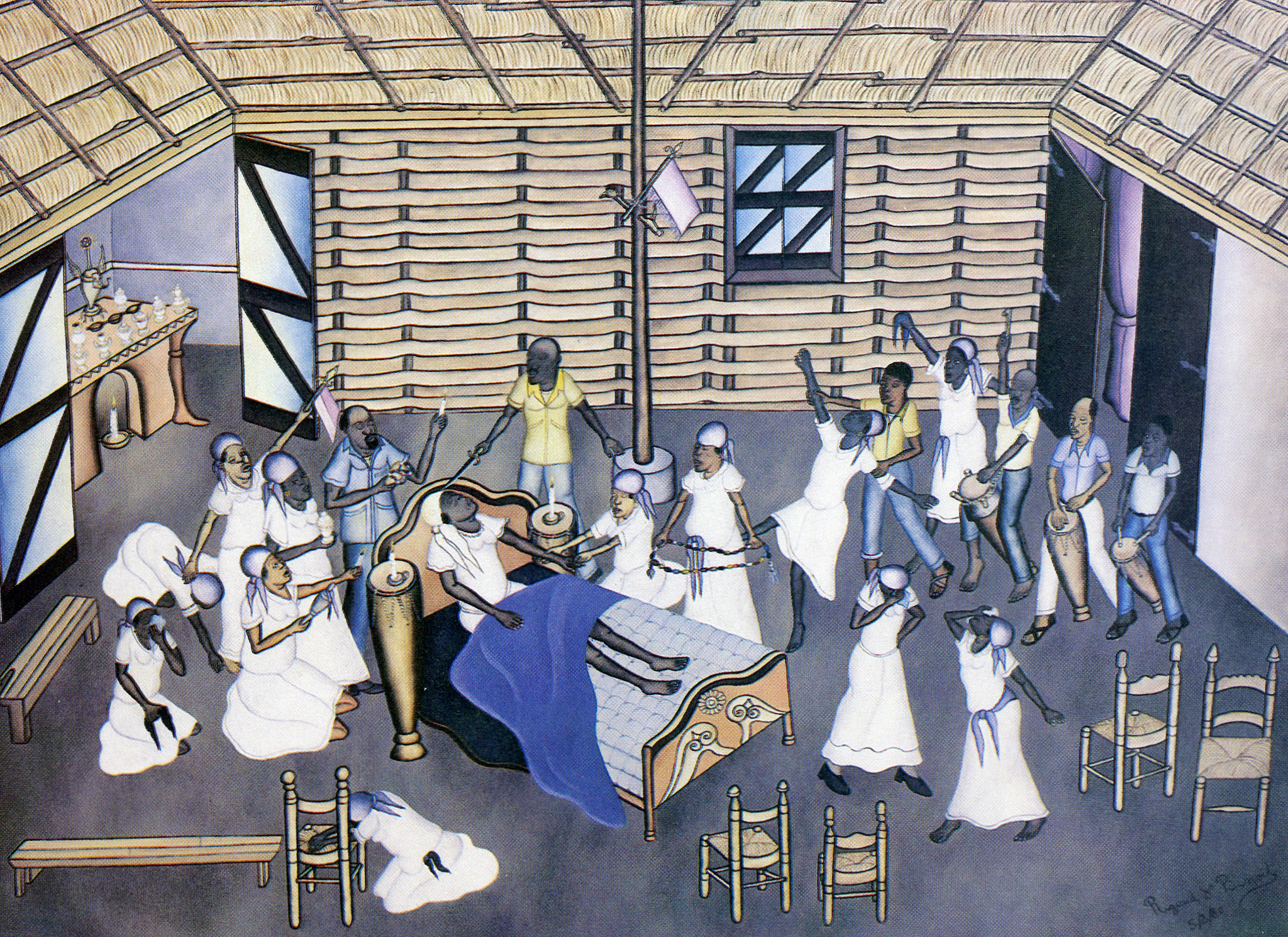oil on board
Painting
Benoit's painting accurately depicts one of the most important ceremonies in vodou, the Desounen, a religious service connecting the sacred cyclical components of life, death and renewal. To those who practice vodou, the act of death has two phases, physical and spiritual. After physical death, the spirit's departure from the body takes place in stages and is not complete until the community gathers to insure the proper release of the two remaining parts of the soul (the first part of the soul having departed upon physical death). The ceremony also insures the continuance and flow of sacred ancestral knowledge from one generation of vodou practitioners to the next. Benoit's extensive use of purple and black refer to lwa Gede, the vodou deity of death. A deep purple sheet covers the dead woman, and the initiates wear purple and black. They are divided into four distinct groups, each acting out the predetermined roles that must occur for the Desounen to be successful: drummers, the ounsi (female initiates) dressed in their ritual color of white, laplas wearing yellow shirts (assistants to the oungan, or vodou priest), and the oungan. With the successful departure of the last part of her soul the deceased can now rest in peace. The community is also at peace knowing that they have successfully transferred the three components of her soul to their appropriate resting places: the ti bon anj (little good angel) to heaven, the gros bon anj (big good angel) to Ginen, the watery world under the earth where all things African go, and the mèt tèt (master of the head) into the head of a living family member.